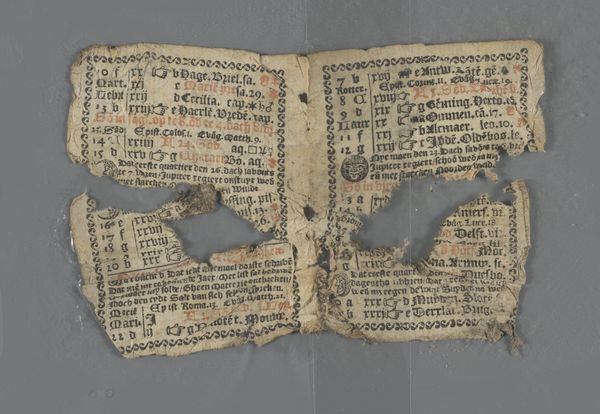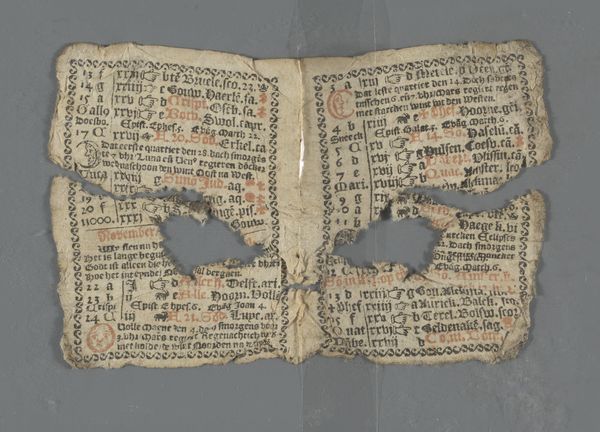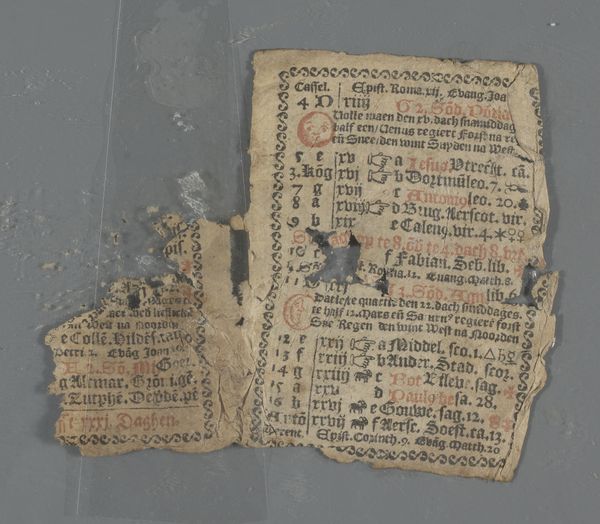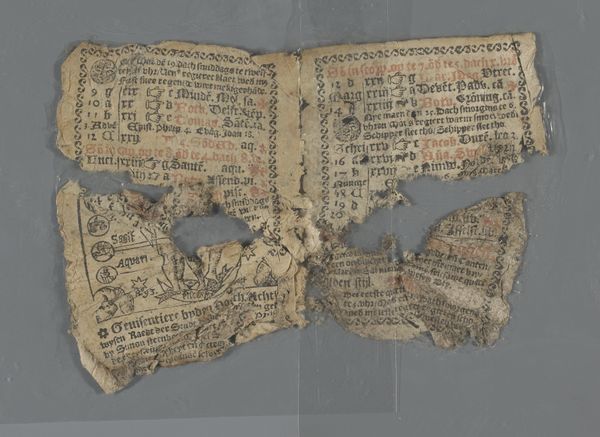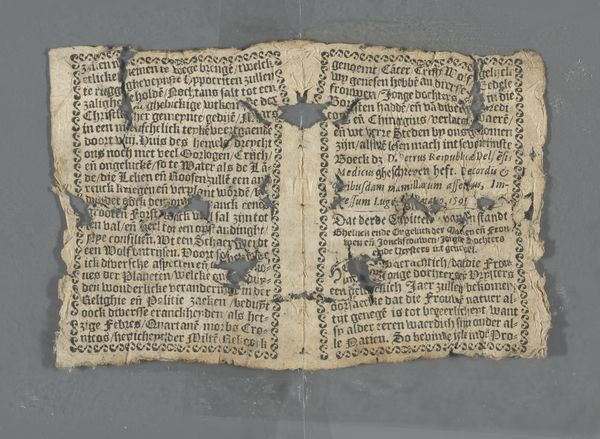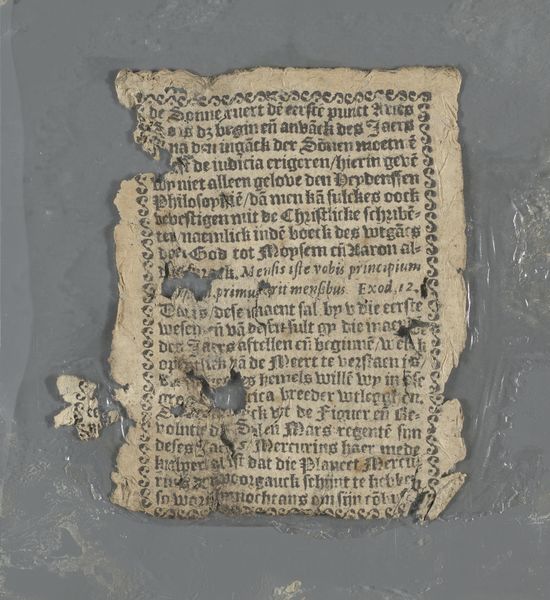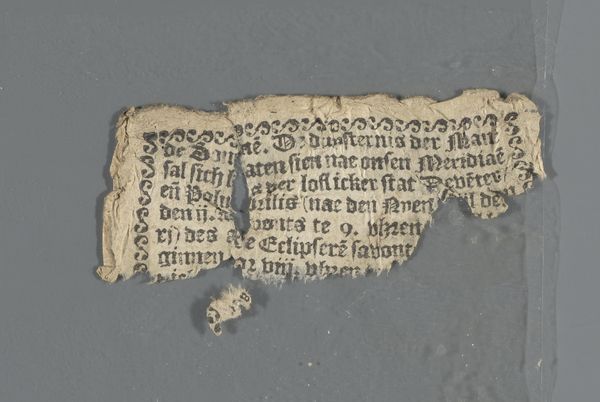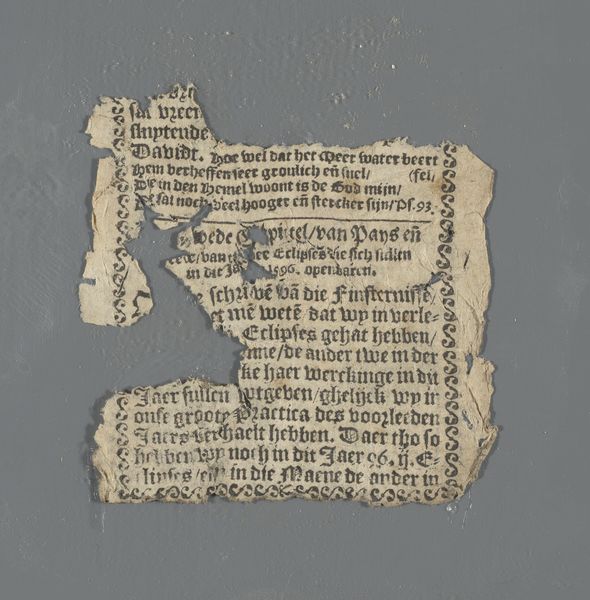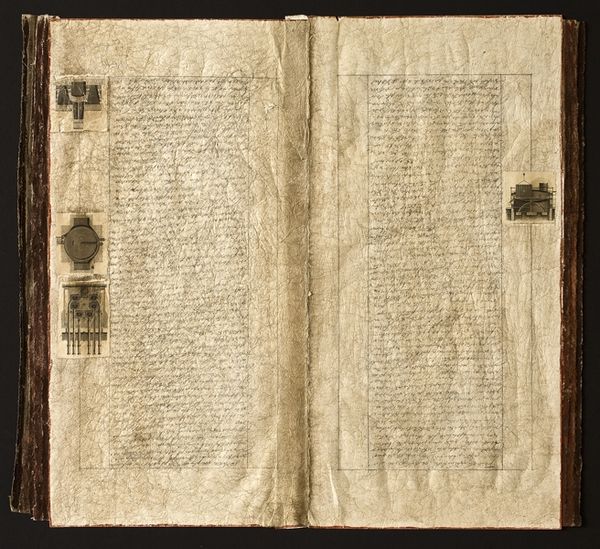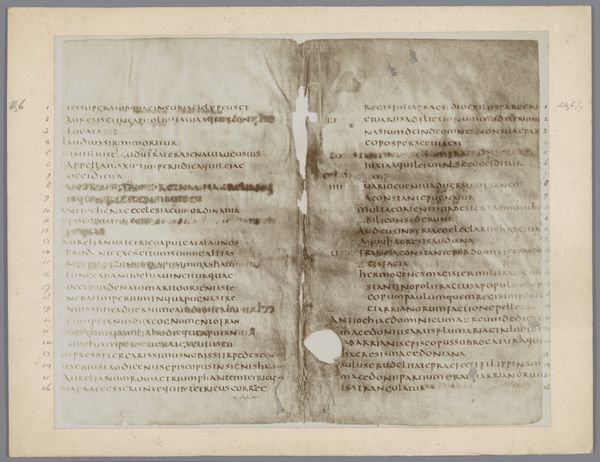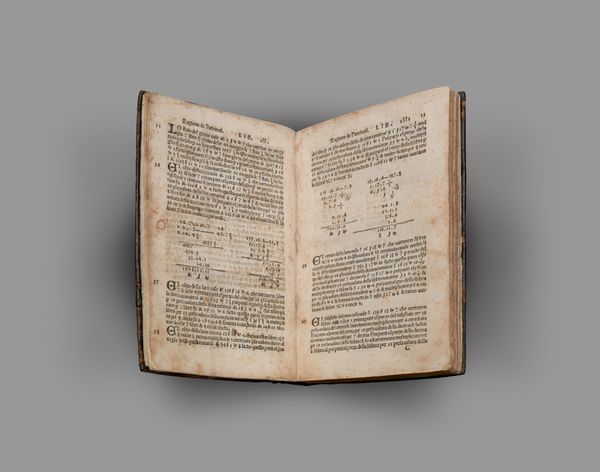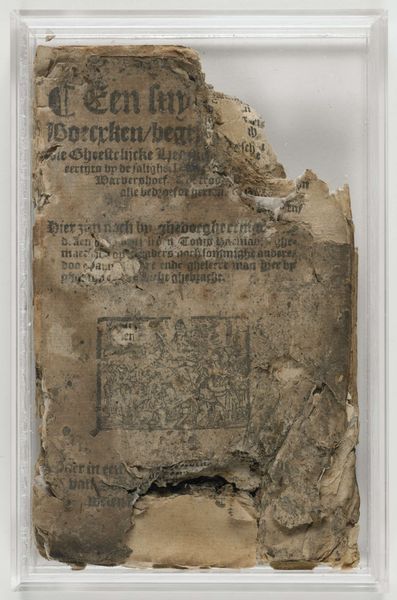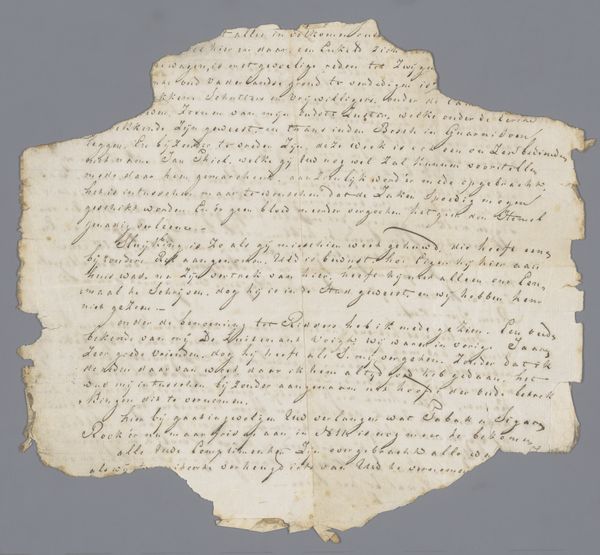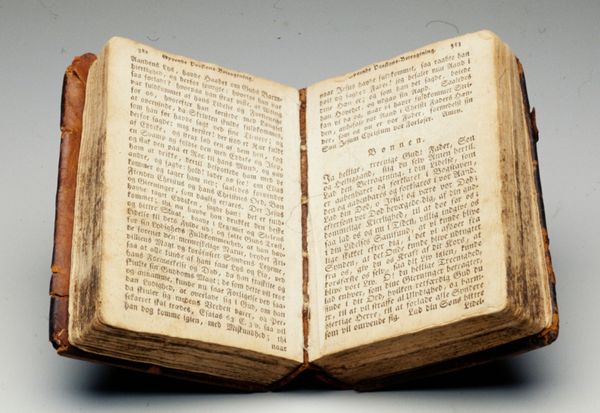
#
medieval
# print
Dimensions: height 9 cm, width 14 cm
Copyright: Rijks Museum: Open Domain
Curator: This tattered page from a Deventer Almanac, circa 1596, is presented as a print. Looking at it, one can almost feel the weight of information it carried for its original owner, can’t you agree? Editor: I can. I feel a sense of fragility, but also endurance. What do you see in this object? Curator: The most compelling aspect of this piece lies in its production and consumption. Almanacs like these weren't high art; they were utilitarian objects, mass-produced for a burgeoning literate class. We must consider the physical labor involved – the typesetting, the printing, the distribution. These were skilled trades, deeply embedded in the social and economic fabric of the time. Who had access to this object, what was its cost? What does its partial survival reveal about the value – or lack thereof – attached to printed material in the 16th century? Editor: That’s fascinating. I hadn't considered the sheer effort involved in creating something seemingly so commonplace. Does the text itself reveal anything about the social context? Curator: Absolutely. While much is missing, note the mixture of practical information - calendar dates, astronomical data - with religious observances and possibly even astrological predictions. This blend speaks volumes about the worldview of the almanac's intended audience, a world where the celestial and the earthly were intimately intertwined. The act of *using* this almanac became an embodied experience that structured daily life. Also the tears and wear suggests its heavy and precious usage. Editor: I see what you mean. It's not just a calendar; it's a window into the daily lives and beliefs of people living centuries ago. Curator: Precisely! And that perspective shifts our understanding of art from being about precious unique creations to that being also about accessibility, manual skills and labour, information management, and distribution of resources. What is your conclusion from our observation of it? Editor: I never thought about art this way before. The materiality of this little printed object reveals a lot about social and historical context, not only about high art, which expands our concept about art! Curator: Exactly! And looking at those mundane almanacs allow us to re-imagine social and economic practices during this specific time, by emphasizing human relations within the material.
Comments
No comments
Be the first to comment and join the conversation on the ultimate creative platform.
